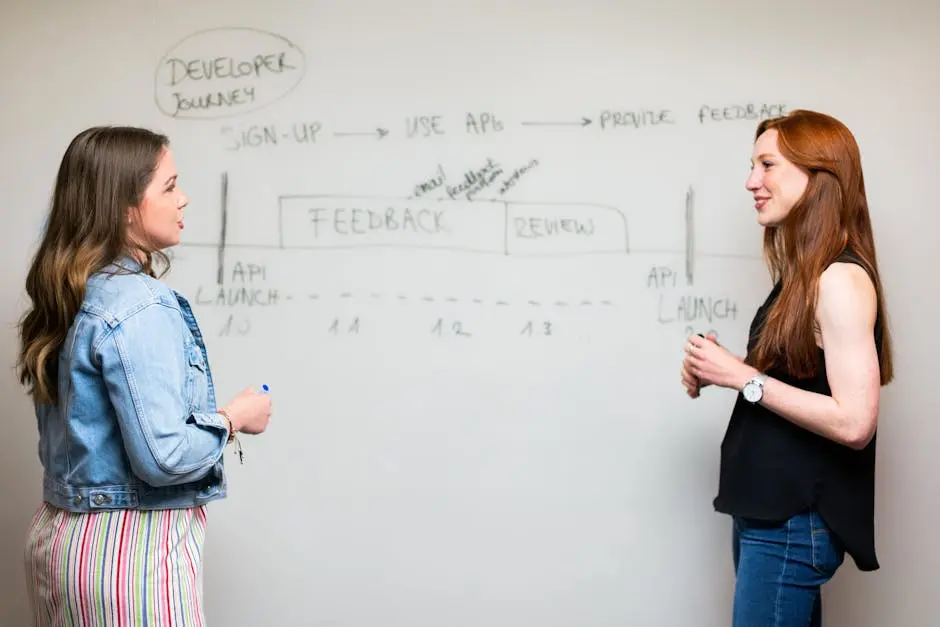In today’s competitive digital landscape, the feedback you receive and how you act on it can be the difference between an app that thrives and one that flops. Understanding and mastering the art of app feedback is essential for continuous improvement and success.
Understanding the Importance of Feedback
Feedback provides insights into user experiences and expectations, guiding you to improve your app. It’s a crucial component in ensuring your app meets users’ needs while staying competitive in the market. Listening closely to user feedback can reveal unexpected trends and highlight potential issues before they escalate into major problems. By remaining responsive to feedback, developers can adapt to changing user requirements and refine their apps in a timely manner.
Moreover, user feedback serves as a rich source of ideas for new features and enhancements. Through direct input from your audience, you can unearth innovative concepts that may not have been considered initially. This iterative process not only helps in fine-tuning existing functionalities but also inspires future developments that align with user expectations, keeping your app relevant and engaging.
Gathering User Feedback Effectively
Collecting diverse feedback from various channels such as app reviews, surveys, and social media helps you paint a fuller picture of user satisfaction and areas for improvement. One of the most potent methods is utilizing in-app surveys, which allow for real-time feedback collection while the user experience is fresh. Surveys like this can reveal immediate insights into user experiences, helping to pinpoint what users appreciate or struggle with in your app.
Additionally, leveraging tools that integrate feedback buttons seamlessly into both web and mobile platforms can significantly increase engagement rates, with some formats achieving as much as a 60% response rate. Implementing various feedback channels provides users with the flexibility to choose how they wish to communicate their thoughts, thereby increasing the volume and diversity of responses you receive. Such comprehensive strategies not only enhance user interaction but also broaden your understanding of the user journey.
Social media platforms also offer a unique vantage point for gathering spontaneous and candid feedback. Users are more likely to freely express their genuine opinions in a casual environment like Facebook or Twitter, which can provide raw insights that structured surveys may not capture. Monitoring mentions and direct interactions on these platforms helps in understanding real-time user sentiments and emerging trends, ensuring your app evolves in line with user expectations.
Analyzing Feedback for Actionable Insights
Once feedback is gathered, the next step is to analyze it for trends and recurring issues. This helps prioritize changes and innovate effectively. Using AI-driven analysis tools can significantly hasten the interpretation of vast amounts of feedback data, allowing you to quickly act on the most pressing user concerns. For instance, leveraging AI to detect patterns and categorize common themes from written feedback enables more structured decision-making.
Furthermore, examining feedback through the lens of user segmentation can unveil how different user groups interact with your app. This method allows for targeted enhancements that cater to specific user needs, improving overall satisfaction and retention. By dividing users based on behaviors, demographics, or preferences, you can tailor updates to address the unique challenges and desires of each group. This systematic approach ensures that improvements are both efficient and effective, thoroughly addressing core user concerns.
Implementing Changes and Communicating Updates
After identifying necessary updates, implementing these changes quickly improves user satisfaction. Additionally, communicating updates to users helps build trust and transparency. A well-structured communication plan ensures that users are aware of how their feedback has influenced the app, which in turn fosters a sense of community and loyalty. Clear, concise notifications detailing what’s new and improved can also serve as powerful marketing tools, enticing users to revisit the app to explore recent changes.
Moreover, demonstrating responsiveness to feedback by highlighting it in update notes or public announcements can significantly enhance user engagement. Users appreciate when their voices lead to tangible changes, and providing visibility into this process can reinforce their commitment to your app. Creating channels for communicating these updates, such as newsletters, push notifications, or blog posts, ensures that your message reaches a broad audience, further solidifying the perceived value of user input in the app’s growth and development.
Overcoming Challenges in Feedback Collection
Collecting and acting on feedback can be challenging due to biased responses and limited feedback sources. Finding the right balance and tools can help overcome these challenges. To address biased feedback, consider diversifying your feedback mechanisms to include anonymous surveys, which can encourage more honest and uninhibited responses from users who might otherwise feel hesitant to share constructive criticism.
Additionally, harnessing multiple feedback channels can counterbalance any limitations inherent in a single source. Employing a mix of qualitative and quantitative feedback methods, such as surveys combined with user interviews, provides a richer and more nuanced understanding of user needs. This multifaceted approach ensures that no single source dominates the narrative, providing a more balanced view of the user experience.
Creating a Feedback-Driven Culture
Encouraging a culture where feedback is valued fosters an environment for continuous improvement. Engage your team in this process to enhance motivation and innovation. One way to drive this culture is by integrating regular feedback sessions into your team’s workflow. These sessions not only prioritize feedback analysis but also empower teams to proactively contribute ideas for enhancements and new features, creating a continuous cycle of improvement.
Additionally, celebrating successful improvements guided by feedback can exemplify the positive impacts of user input, reinforcing the importance of feedback in achieving success. Recognizing and rewarding teams for their contributions further incentivizes engagement with the feedback process. By embedding these practices into the organizational framework, you cultivate a feedback-driven ethos that permeates every level of your company, ultimately driving your app’s growth and long-term success.
Embracing Feedback for Continued Growth
Mastering app feedback is a journey of learning, adapting, and evolving. By actively seeking and effectively utilizing feedback, you can continue to enhance your app, delight your users, and achieve long-term success.

